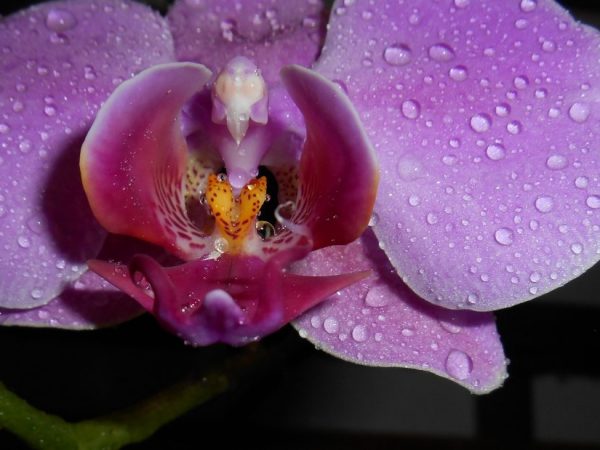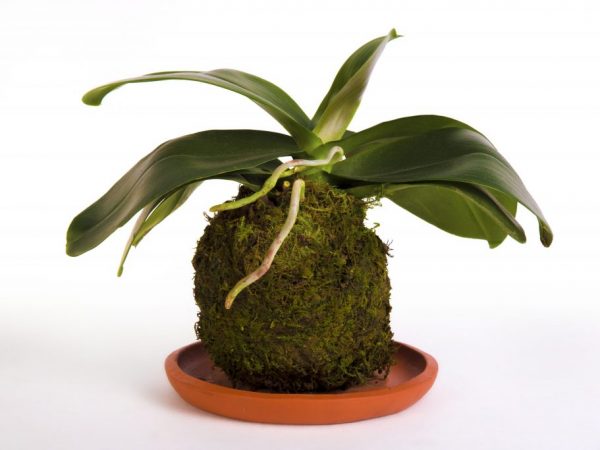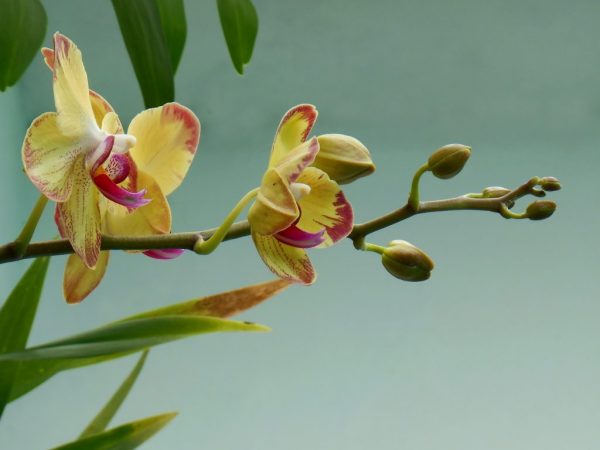The best substrates for orchids
To grow an orchid, it is important to know not only the rules of care, but also in what soil to plant it. Orchid substrate is used based on the type of plant. It is easy to make at home.

The best substrate for orchids
For epiphytic plants
Pine bark is the most readily available material for planting plants in the Orchid family. It is crushed, thermally processed, and therefore environmentally friendly material.
The substrate is suitable for phalaenopsis orchids, dendrobium, i.e., species with a well-developed root system.
If plants are transplanted into the composition of a freshly prepared substrate for epiphytic orchids, sphagnum moss is added in a ratio of 3: 1.
For land plants
The composition is slightly different. Its moisture capacity is much higher. To increase this indicator, the harvested pine bark is mixed with soil, which includes peat (2: 1). In it, plants often rot the root system, so it cannot be called the best.
Best line-up
Of all the substrate components, sphagnum moss and bark are the main components. Also, manufacturers began to produce substrates for orchids with a more varied and expensive composition.
As additional fillers are:
- coconut flakes;
- charcoal;
- pine shavings;
- shredded fern roots.
Such a nutritional composition is made by hand, having the entire set of components.
How to cook at home

Cooking a substrate from different components
To make a substrate for orchids, all the necessary components are prepared. Preparation is carried out at different times of the year.
Sphagnum moss
Moss is collected in spring. This component is a kind of bioindicator. In the place where it grows, the environment is considered environmentally friendly.
Such a component absorbs moisture well, prevents the development of pathogenic microflora and contains a small amount of nutrients.
It is stored both dried and frozen.
Pine bark
Pine bark is collected from the trunks of fallen trees. Pieces of wood whipped by the bark beetle are not suitable for preparing soil mixtures: they will quickly rub through this way. They choose dense pieces with a thickness of 1-2 cm, so that later they can be cut with pruning shears.
Often, pests enter the pot with such material. Therefore, before preparing the substrate for keeping orchids, this component is poured onto a baking sheet and dried for 5 minutes at the lowest temperature.
The process of cutting and harvesting pine shavings itself is laborious. Today, pine bark is on sale. It is both cheaper in price and superior to pine in quality: it takes longer to decompose and does not smell like resin.
Fern rhizome
It is one of the most important ingredients in preparing orchid potting mix.It contains the beneficial and nutrients that tropical plants need.
Root digging is carried out in early spring before the beginning of the growing season or in the fall, during the dormant period. The roots are dried in a darkened and well-ventilated room, then cut into small fractions and stored in a tightly closed container.
Charcoal
This component is not difficult to obtain. Take coals from a dying fire, wait until they cool down, and break into small pieces. In such a fire, flame-igniting mixtures should not be used.
Instead of charcoal, chopped walnuts or coconut are used as a baking powder.
Expanded clay
Recently, the cultivation of tropical plants is carried out in expanded clay. This material with a porous structure is environmentally friendly.
It impregnates the salts of hard tap water, which negatively affect the growth and development of flowers. At the same time, expanded clay has one drawback: if the plant is not watered in time, the material dries rapidly and takes moisture from the roots of the plant. A dehydrated flower loses its decorative effect and withers.
Mixing rules

The orchid must be fertilized
Orchids require a substrate that:
- retains moisture well;
- will not turn sour;
- has a loose structure, which increases its moisture and air permeability.
Having the necessary set of components, they prepare a substrate for orchids with their own hands.
The mixture is prepared quickly and easily. At home, mix the substrate for phalaenopsis orchids, dendrobene, etc.
The most nutritious and acceptable for plants is a composition of pine shavings, charcoal, sphagnum moss and fern roots.
Ready mixes from the manufacturer
The modern market offers a number of formulations for growing indoor flowers.
Biogrunt
An indoor orchid is planted in bio-soil. This nutrient substrate is used for both epiphytic and terrestrial orchids. It consists of the following ingredients:
- high-moor peat;
- sphagnum moss;
- expanded clay;
- charcoal;
- pine shavings.
Vermicompost is used as an organic filler.
Zeoflora
Ready-made store-bought soil is suitable for growing Phalaenopsis orchids, dendrobene at home. The composition includes a large amount of silicon and trace elements that contribute to the full growth and development of the root system of plants.
Zeoflora nutrient soil contains several types of sorbents that have a beneficial effect on plant growth. Such an environmentally friendly composition has no pests: bugs, fungal spores and other pathogens. Also, it does not contain seeds of weeds and dangerous plants.
To date, this is the most correct ready-made composition. It is used for planting and transplanting all types of indoor plants of this family.
Profi 1L
Pro's ready-made nutrient substrate consists of several nutrient components:
- pine bark;
- coconut chips;
- sphagnum moss;
- coconut fiber;
- charcoal.
Stir the mixture before planting the plant. Drainage is made from coconut fiber to the bottom and walls of the flowerpot. The contents of the package are designed for a container with a volume of 1.5-2 liters.
Bio effect
Bio effect substrate is used to grow all varieties of indoor flowers in this family. Other plants that require a high degree of air permeability are also grown in this soil.
Such a mixture consists of the bark of the Angara pine fraction of 19-28 mm.
Conclusion
The best is the composition of natural ingredients. But not everyone has the opportunity to purchase or cook it with their own hands. An alternative to the soil will be ready-made store mixes.


